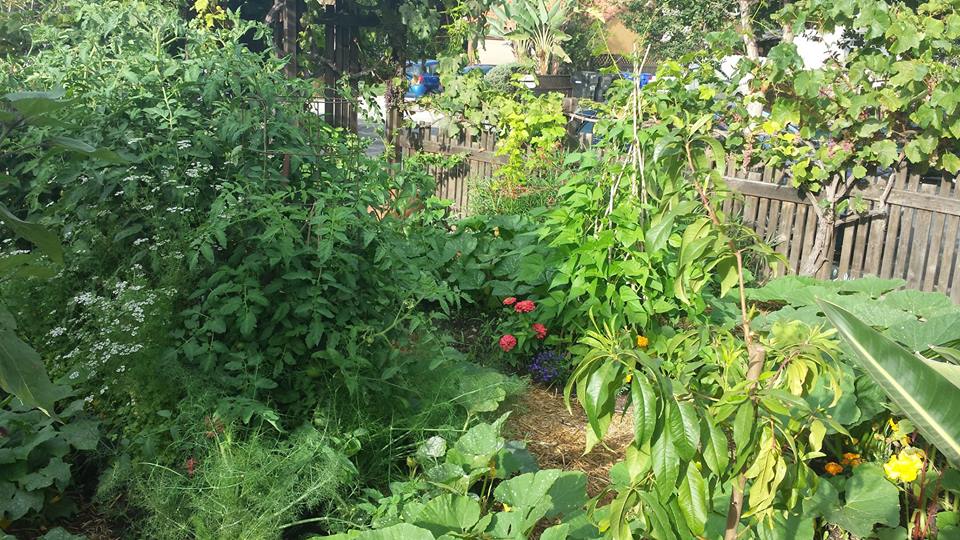
You can enjoy a edible garden in place of a lawn. You will use far less water and grow tasty fruits and vegetables for your table. Photo: Courtesy Karen Contreras, Urban Plantations
Homeowners in drought-stricken California have gotten serious about making changes in their water consumption. They are ripping out their water-guzzling lawns in record numbers.
What they don’t always do is give a lot of thought about what will replace that lawn. So we end up seeing a lot of mulch and rocks as a quick fix.
Consider a tastier alternative: Foodscaping.
The simplest definition of foodscaping is landscaping with edible plants. It embraces the concept of growing food in place of lawns on private or sometime community property. It’s something in between farming, where you are growing food in a way that maximizes output, and landscaping that is meant to be decorative. This is an edible garden that’s pretty, but puts your water consumption to better use than growing a lawn by growing fruits, vegetables, and grains
Foodscaping began to take off across the U.S. after the recession hit hard in 2008. At first it was a way to supplement a family’s food supply. But the concept grew roots and people began to embrace the idea of integrating berry bushes and vegetables into home landscaping along with flowers and other plants. The National Gardening Association reported a 20 percent increase in food gardening between 2008 and 2012.
As I have written before on this blog, our food is often imported from a long way to our local stores. Taste and nutrition are sacrificed for shelf life to make the trip, and fossil fuels are used for transportation. Foodscaping gives you healthier fresh food and it doesn’t have to travel more than a few feet from garden to kitchen. It reduces fuel, energy, chemical use, pollution, and lowers your water use when compared to the same amount of lawn.
Foodscaping goes way beyond planting straight rows of carrots. It can be just as artistic as traditional landscape design. Select different types of food bearing plants: citrus trees, blueberry bushes, lettuces and herbs along with your classic high-yield tomatoes and squashes. Why not plant sunflowers, which attract birds? Rows of bright chile peppers can add as much color as traditional flower beds.
You can use containers, trellises, and other appealing structures as design features in your foodscaping approach to present just as much visual appeal as traditional trees, shrubs and a lawn. There are an increasing number of resources to help you get started.
One of them is my upcoming presentation with Karen Contreras of Urban Plantations at the third annual San Diego Green Building Conference on Saturday, September 22 at the Energy Innovation Center. Karen is a leader in San Diego’s urban farming movement. Visit her website and be sure to follow Urban Plantations on Facebook and Instagram.
Watch this web page for more details and registration info. Karen and I would love to see you there for this talk about one of my new passions.
Two important considerations. First, if you are going to tear out lawn, you need to prepare the soil properly or you’ll be fighting it back for years. San Diego organic gardener Connie Beck has written an excellent article about removing your lawn you will find helpful. Second, be sure if you live in an area governed by a homeowner’s association that your new edible landscaping still meets its requirements. Legislation is pending in California which would forbid HOAs from requiring lawns, but it hasn’t passed just yet.
The time is long gone when your neighbors would turn up their noses at your non-traditional, messy looking landscaping. We all understand what we’re up against with the ongoing drought. Foodscaping can encourage community. Talk with your neighbors about coordinating your crop choices, and consider trading your extra tomatoes for your neighbor’s extra strawberries.
